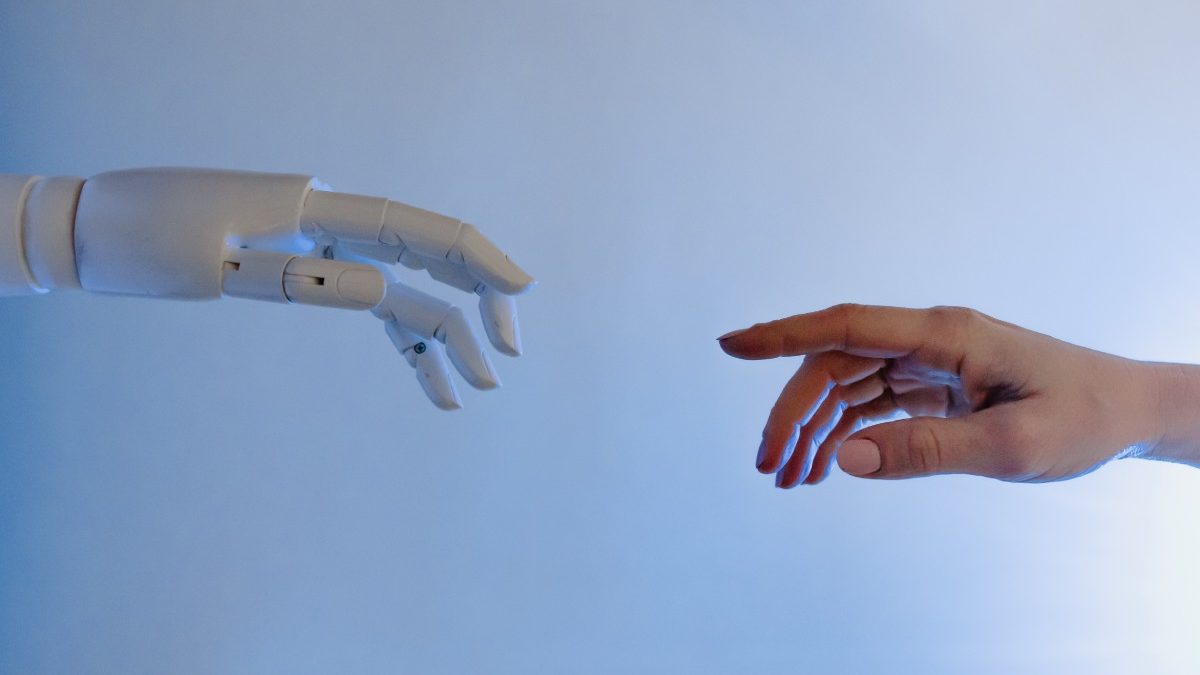Future of Artificial Intelligence – Assistants to accompany the elderly, triage patients, detection of ailments, climate change… The end of AI is more present than ever.
If we have data, we can do anything.” It is the magic ingredient for artificial intelligence to work and give optimal results for a ‘ smart society’ to optimize its effectiveness. That’s how clear it is to Claudia Villalonga, academic director of the Master’s Degree in Artificial Intelligence at UNIR, with whom we have taken the opportunity to talk about the boom of this type of technology in our day-to-day. And the fact is that the future of artificial intelligence is more present than ever: “We find it everywhere, on our mobile phones as voice assistants; in our house through smart speakers that connect an alarm. This is already a reality.”
In the last 3 years, a large part of the population has gone from being unaware of the term to knowing what it is or at least being familiar with it. Are we aware of its use and the responsibility it entails?
Table of Contents
AI Has Come to Revolutionize our Present
Giving to a recent report by the International Data Corporation, spending on artificial intelligence will double in the next 4 years. Between 2020 and 2024, it is expected to go from 42.3 million euros to 93 million. Companies are looking to be more agile and innovative at an unusual time. Among the main objectives: provide a better customer experience and help users perform better in their roles. In short, they want to make our lives a little easier with a more personalized level of service. How will it affect our daily lives? These are some examples proposed by Claudia Villalonga.
1.- Personal Assistant for the Elderly
If you have seen the recent HBO series “Years and Years,” where we can closely follow the progress of a British family towards an increasingly technological future, surely you remember the grandmother. This character manages to establish a close relationship of ‘friendship’ with her virtual assistant, who helps him in any doubt in her home, to the point that she keeps him company. For Villalonga, this is one of the points where AI has a place: as an assistant, she can accompany older people who live alone.
“The coronavirus confinement has shown us that people have not handled isolation well on a mental level. But what if your device at home spoke to you from time to time to ask how you are or if you have taken your medication? The elderly would no longer be so alone and would have someone to talk to. Even further, their smart pillbox could be the one that detects that they haven’t taken the pill and alerts them.”
For Villalonga, not everything asks a machine to turn on or off an alarm, the light, or a music system. The nearest future will revolve around our virtual assistants becoming closer and becoming an essential part of the family.
2.- Triage of Patients
If a machine could decide how serious a disease you have based on a series of parameters: temperature, symptoms, pain, blood and urine tests, an X-ray, or even a photo, it would be an effective way for The doctor who had to treat you did so in a logical order, leaving the mildest patients for last:
“Machine learning could tell you which group you are in. Imagine that, just by entering the symptoms into the computer, based on past experiences, it could be classified according to severity. By this, I do not mean that the doctor’s role is eliminated. It is a way of supporting the admissions staff who must prioritize their assistance”, highlights Villalonga.
This system would avoid many headaches for those in the emergency room deciding the order of care, and their decision would have a scientific basis.
3.- Early Detection of Diseases
Without a doubt, this is another of the fields within Health. Where AI is gaining weight, and even more so since the arrival of COVID-19 in our lives. This type of technology has allow, for example, the importance of research in which the study of X-rays of the lungs of coronavirus patients can determine with greater certainty if a patient is infected and how serious they are.
In the first weeks in China, doctors in Wuhan use a specific algorithm develop by the Axial AI company to take millions of X-rays of people with symptoms. That data set would help them make a more accurate diagnosis. This way of working extends to the rest of the world, giving a boost to technology to apply it without barriers in treating more diseases. An example, Villalonga highlights, are diabetics: “AI can help us analyze the monitoring data of a diabetic person. A machine would automatically collect all the blood glucose records, then process them and thus see trends in their health status (amount of insulin they need) and if their health is getting better or worse according to their time series”.
AI has innumerable fields where it can develop in health. The advances in image analysis detect the advancement of a disease or even anticipate it. It is also well known with X-rays and directly on the skin. Some master’s students have research apps that detect if you can have skin cancer from a photograph of a suspicious mole. There is already technically capable of seeing which can be classified as a possible melanoma”.
4.- Injury Prevention
As we have seen, monitoring and processing the data obtained go hand in hand. And can help in the health field—another example we see in soccer teams. I’m sure many of you have seen many League players wearing some top vest for several seasons. A ‘smart GPS vest’ monitors all values: distance traveled. At what speed acceleration, body impacts, heart rate…
All this information later use to control the player’s health and anticipate. Whether he will have an injury or a cardiovascular problem. With these devices, you can measure if a person will have a heart attack. By monitoring her all the time, you could detect very quickly if her heart rate is going up.”
Now it is a product that is used in sports. Still. It could benefit the population thanks to the recognition of activities. Through a mobile device that you carry with you. As long as you have it in your pocket. You can know very quickly whether the person is walking, running, or passive, or not. All this works with the mobile’s accelerometer, which makes your screen rotate. And we could detect patterns with machine learning.”
This way, your doctor could anticipate diagnosing possible health problems. And bodily injuries you may have if you continue doing the same routine…
Also Read: How to Deal with ISO 27001
Related posts
Featured Posts
Valores – What is a Valore and What are the Valores?
What are Valores? Valores is a Mexican word that is also known as Values in English. Values are the norms…
Operating System – Brief Explanation
An operating system is a set of programs that allows us to manage the memory, disk, information storage media, and…



